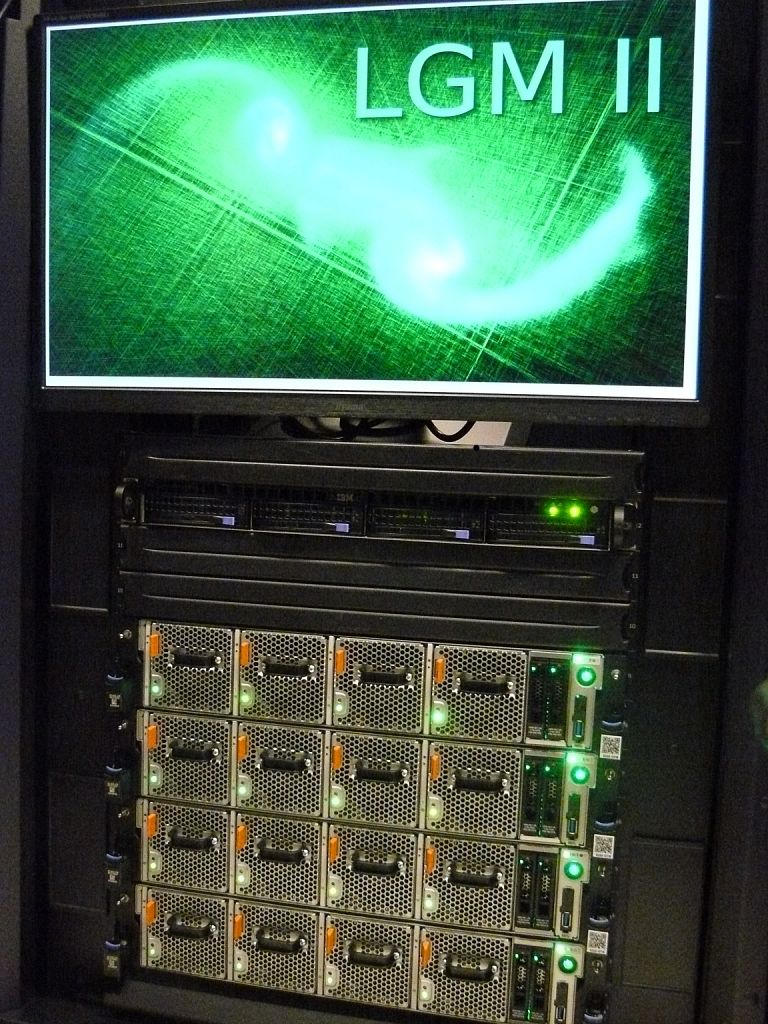A team of Dutch scientists has built a super computer the size of four pizza boxes. The Little Green Machine (LGM) II is located in Leiden. Delft researchers use it for 10% of the time.
The small supercomputer is the successor of the LGM I from 2010 and it’s about ten times faster. LGM II handles up to 200 million million operations per second (0.2 petaflops), which is equal to ten thousand PCs.
Yet the machine is small enough to transport on a cargo bike, uses about 1% of the energy of a ‘standard’ supercomputer, and costs a fraction of it: 200 euros. The development of the LGM II was funded by the Dutch research funding agency NWO.
So what is the difference between the LGM II and other supercomputers? Professor Kees Vuik (numerical analyst at the TU Delft Faculty of Electrical Engineering, Mathematics and Computer Sciences (EWI)) explains that the LGM owes its computing power to graphical processing units (GPUs). In contrast to CPUs (central processing units), GPUs have high-speed access to memory because they are made to recalculate screen contents 25 times per second. CPUs may have comparable processing speeds, but the speed of access to memory lags behind, explained Vuik.
An even greater help is that while a CPU may house up to sixteen cores, a top GPU has thousands of cores. “An individual graphic processor may be slower, but the sheer amount makes up for that”, said Vuik.
According to the press release issued by the project leader, Portegies Zwart, Astronomy Professor at Leiden University, the LGM II consists of four PCs with four powerful graphic cards (GPUs) each, coupled to a super-fast network.
The computer is dedicated to solving partial differential equations as occur in astronomy (simulation of colliding galaxies), fluid dynamics, seismic and artificial intelligence.
“GPUs are less flexible than CPUs”, said Vuik. “They excel in simple arithmetic, but don’t bother them with ‘IF-THEN’ statements.” It turns out that many massive calculations consist of doing a large number of repetitive operations. That’s exactly what the LGM II is made for.
Members of the Delft Institute for Computational Science and Engineering (DCSE) have helped develop algorithms for the new supercomputer. In return, the Institute has been given access to the machine for about 10% of the time.



Comments are closed.